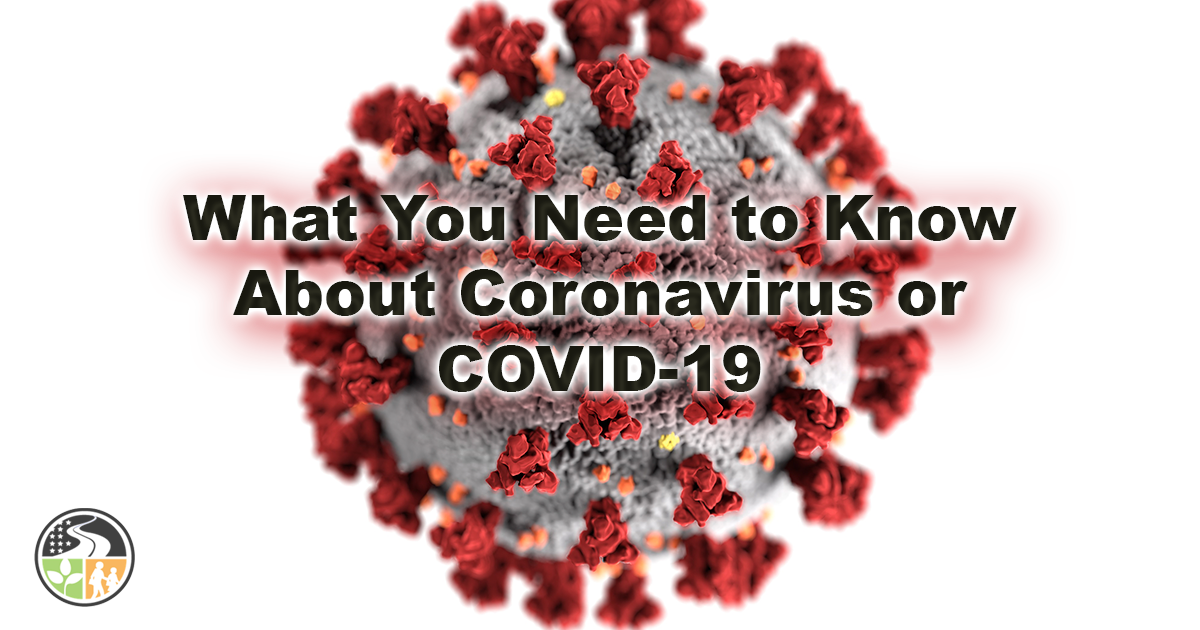What You Need to Know about Coronavirus or COVID-19

*The information in this article was accurate at the time it was written. Since COVID-19 is a rapidly evolving pandemic, new information is constantly being released. Please check with your local health care provider for updated information.
You can’t escape the news—a virus is spreading throughout the world, and it is spreading fast.
Various internet sites are constantly refreshing the statistics. It seems that every media source is bombarding you as the situation develops. More cases. And yes, more people are dying!
Does this have anything to do with you? Is it just media hype? After all, don’t they say that most of the cases are mild?
The Asymptomatic Challenge
What does it mean to be asymptomatic? It is when someone has an infection but they have no symptoms or signs of being sick. So, why is this a challenge?
When a virus provokes obvious symptoms in people, the disease is often easier to identify, and therefore, steps can be taken more easily to quickly to confine it. As a result, persons showing symptoms can be isolated quickly so as not to affect others.
However, a virus that has asymptomatic qualities makes people think they can continue life as usual because they do not exhibit any symptoms. They go to work, spend time with their best friends, take a trip to the supermarket, and pick up some fried chicken to go. Along the way, they potentially infect everyone they come in contact with.
Just how deadly could it be?
The Spanish Influenza that started in 1918 is known as “the most devastating epidemic [pandemic] in recorded world history.” It killed around 40 million people, with a mortality rate of 2.5 percent. The high death toll was in part because of how many people got sick. Also, the medical care that was available in the early 1900s is not nearly as advanced as what we have today.
As of March 2020 has on average a reported mortality rate of anywhere between 1.8-3.4 percent. With no vaccine available (at the time this article was written) this may become the most devastating pandemic in recorded world history.
"But I'm young and healthy!"
A young person might point to the higher death rate among older people and ask if they really need to take precautions. Think about this: although you might not get seriously ill from COVID-19, do you want to be responsible for getting your grandma sick with a potentially deadly disease? It is possible for someone to have the virus and show no symptoms—the more people they interact with the more they could spread the virus and then more possible deaths that could result.
And the reality is that young people are not immune to the effects of the disease. Some studies of the cases in the United States show that nearly 20 percent of confirmed cases are in younger adults. In fact, in some countries, younger adults in their 20s, 30s, and 40s are becoming the primary spreaders of the virus. Experts fear that this trend may grow in the United States as well.
What can you do to keep yourself, your friends, and your family safe?
Be wise! Do all you can to avoid getting sick. Since the virus is mainly spread from one person to another, the safe course of action is to limit your contact with other people.
That’s why there’s so much emphasis on “social distancing,” or keeping a few steps away (at least 6 feet) from everyone else. That way, if they happen to sneeze or cough, you decrease the chances of being in their line of fire.
To limit the spread of COVID-19, many countries have limited how often people can leave their homes, where they can go and who they can have contact with along the way.
One of the best ways to avoid passing germs from one person to another is to wash your hands thoroughly with soap and water. Also, to protect others, wash your hands after touching your mouth, nose or eyes.
Follow all of the government guidelines for your area. This includes wearing a mask, eye protection, gloves and even staying at home except for essential tasks.
What are the common symptoms of COVID-19?
Anytime from 2-14 days after exposure to the virus, a person may display the following symptoms:
— fever
— cough
— shortness of breath
Additionally, an individual may get headaches, general body aches, extreme fatigue, a sore throat and nausea or diarrhea.
What if you or someone in your home feels sick?
If you feel sick with any of the symptoms mentioned above, it’s better to be safe and protect others in your family and community. If your symptoms are mild, stay home. If you live with other people, distance yourself from them and disinfect all surfaces often. Some counties and states even offer free testing—with or without insurance. You can search for these free test sites on the internet.
What are the signs that you need to seek medical care?
If you start to have any of the following symptoms, get in touch with your health provider so they can give you instructions based on the area where you live:
—high fever
—difficulty breathing
—pain or pressure in chest
—confusion or inability to wake up
—blue color in lips or on face
What do the professionals say?
We aren't doctors (we don't even play them on TV), but we do think it is important to get advice from professionals. Here are some reliable sources that you can turn to for more information.
—CDC's Weekly Surveillance Summary of US COVID-19 Activity
—5 Things Everyone Should Know About the Coronavirus Outbreak
- 2025
- 2023
- 2022
- 2021
- 2020
- 2019
- 2018
- 2017

